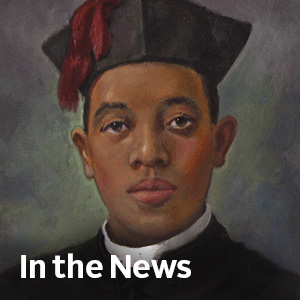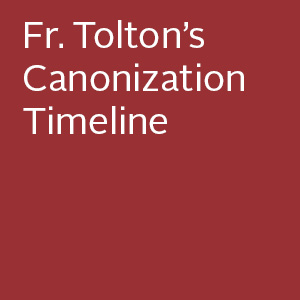Making of a Saint
The canonization of a saint is one of the greatest blessings God bestows upon His Church. Through canonization, God confirms the holiness of the lives of men and women who were His very faithful servants on earth. To be canonized, someone must live a life of heroic virtue at a level above and beyond the ordinary practice of Christian virtue. This would include constancy at prayer, perseverance through great trials, patience in intense sufferings, a notable practice of the works of mercy, especially toward the poor and the suffering, and outstanding zeal in the spreading of God’s love and mercy in word and deed for the salvation of souls and the glory of God.
We need our saints very much. They are shining examples of living the Christian life today. Pope John Paul II, who canonized so many saints, said in their lives we see clearly the working of the Holy Spirit. Like St. Paul, they say to us, “Be imitators of me as I am of Christ,” (1 Corinthians 4, 16). Additionally, their prayers and intercession assist us on our journey to become saints. We all have our favorite saints and patron saints to whom we pray each day. Who doesn’t pray to St. Anthony when they have lost something? Saints constantly make known our needs to Jesus, like our Lady did at Cana. Finally, we have their protection in dangers, their consolation in adversity and their joy in our friendship with them.
The Process of Canonization
We can say that God alone makes saints, but it is the Church that must canonize them. It is true that God makes saints by giving them the graces needed to live lives of heroic Christian virtue. “Without me”, Jesus said, “you can do nothing,” (John 15, 5). God must also manifest His will for the Church to canonize someone by allowing people to recognize that he or she lived a saintly life, called a reputation for holiness and then by granting favors to people who prayed to God through their intercession, called a reputation for signs or favors.
A cause for canonization cannot be opened unless this two-fold reputation exists. Once these reputations exist, usually a group is formed called a foundation which will promote the Cause. This means, especially, to spread word about the person being considered for canonization and that they intend to open a canonization process. In order to do this, the foundation, which promotes the cause, must request a bishop to sponsor the cause. The bishop must be eligible in the sense that he has proper jurisdiction according to canon law, e.g., this is often the bishop of the diocese where the saintly person died.
The Cause is officially opened by the bishop sponsor requesting this from the Congregation for the Causes of Saints in Rome. Once the Cause is officially opened, the person is given the title of “Servant of God”. Next, the services of various officials must be secured. Chief among these is the Postulator, who officially represents the sponsor bishop and the promoter in dealing with the Congregation for the Causes of Saints. He carries out, with his own office personnel, the meetings and communication with the Congregation… their work includes translating documents and testimonies into Italian, selecting the information that is most pertinent to the Cause, forming working documents of the testimonies and later of the proposed miracle cases that are submitted.
The testimonies are put into large book collections, called a “positio”, a working document of about a thousand pages. The positio, containing witnesses’ evidence of heroic virtue by the Servant of God, must be studied first by theologians, and next by a group of Cardinals in Rome who assist the Congregation in its work. If they agree that the testimonies of those who knew the servant of God show he practiced heroic virtue, the positio is presented to the Holy Father. If he approves heroic virtue, then the Servant of God is called “Venerable”.
Then begins another phase of the canonization process. A proposed miracle must be examined. First, medical professionals study the case and give their opinions. If they conclude that the case involves a cure that cannot be explained by natural causes alone, then the theologians and the Cardinals must examine the evidence. If all agree, the evidence is sent on to the Pope. If he agrees with the evidence, he will declare a “miracle.” Then the Cause proceeds to the beautiful ceremony of “beatification.” This is a very elaborate ceremony befitting the declaration of a new “Blessed” in the Church.
Then, God willing, the Cause moves on to sainthood. This requires another miracle worked by God through the intercession of the Blessed. Interestingly, this second miracle must occur after the beatification ceremony. If a second cure is then approved by the medical experts, the theologians and Cardinals, and is officially declared “miraculous” by the Pope, we proceed to Rome for the wonderful ceremony of canonization.
Extract from a paper prepared by
Father Andrew Apostoli, CFR




